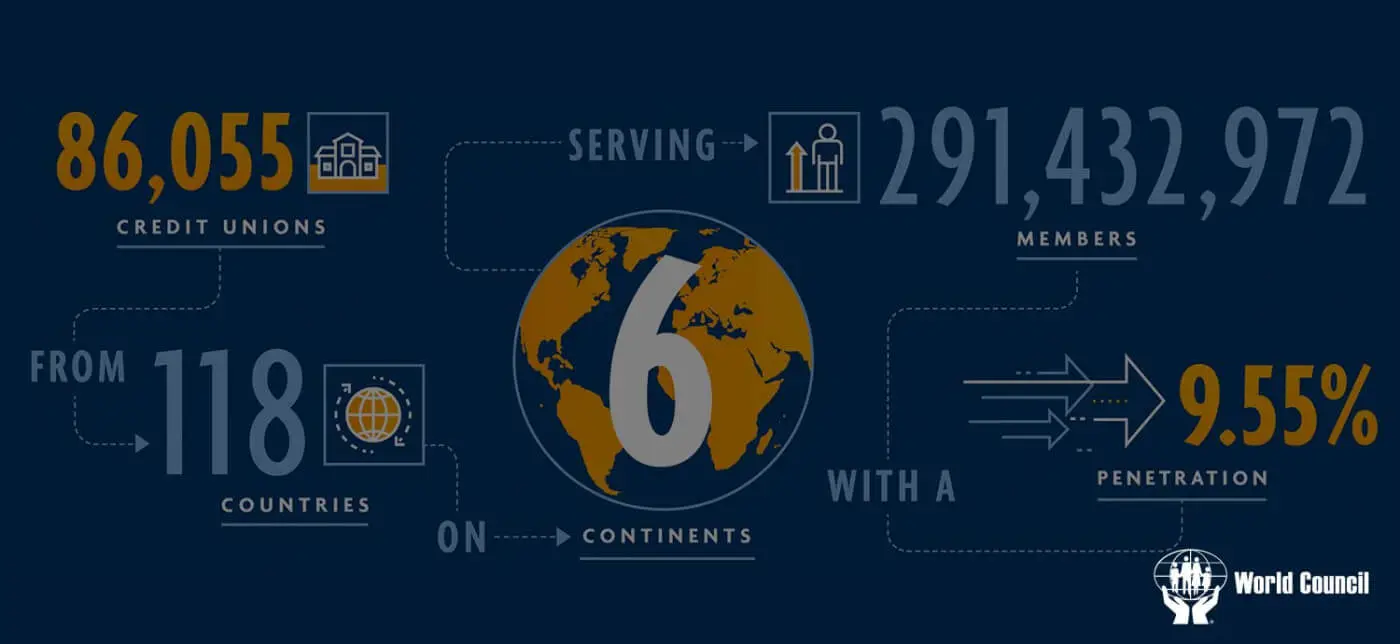Keep pace with the rapidly evolving fintech industry by subscribing to the BIGcast Network. Get weekly insights from industry leaders John Best and Glen Sarvady, delivered straight to your preferred podcast platform. Join our community and stay informed about the latest trends shaping the credit union industry. Subscribe today and ensure you’re always ahead of the curve.

Global Credit Union Growth continues to flourish- but closer to home, the story is murkier
One of the pandemic’s many casualties was the joint CUNA/World Council of Credit Unions (WOCCU) conference, which had been scheduled for July in Los Angeles. Recently WOCCU released its annual Statistical Report, which presumably would have been cause for celebration at the live event. And there is plenty to celebrate, with global membership growth of 17 million (over 6%) in 2019 alone.
With the decade drawing to a close, WOCCU also applied a lens covering 2010-19 and found plenty to cheer. Two regions- Latin America and Africa- saw membership more than double over the decade, with Asia also coming close. It’s safe to assume credit unions played a key role in the major financial inclusion gains made in these geographies, especially since each has historically been among CUs’ lowest penetrated regions.
As for North America, WOCCU points to 30% member growth over the past decade. While that may sound impressive on the surface it equates to only 2.7% annually. Doing my own math, WOCCU data indicates US member growth of 3.6% from 2018-19. Although this rate exceeds US population growth (which is under 1%) it’s not terribly exciting- especially since it includes indirect auto borrowers, many of whom are “members in name only” with little if any further engagement.
More troubling, like other aspects of the US economy the gains have been unevenly distributed. The 315 US credit unions with assets over $1 billion have fared quite well; however, the smallest credit unions are dealing with both member and asset declines. More than half of the 5,200 credit unions in the US have less than $50 million in assets, and according to NCUA data their aggregate membership is declining.
The above is based on 2019 data- and as we all know the landscape has changed dramatically since March. Anecdotally, credit unions have seen solid deposit inflows since the onset of COVID-19 but muted loan demand. I’d like to believe the movement’s “people helping people” ethos will provide a boost to member growth in a difficult environment, but time will tell.
Spurring member growth beyond the country’s largest credit unions is a thorny issue, and one that deserves much more analysis, discussion and action. It’s also essential that success be defined as something beyond a simple number on a dashboard. The true objective must be growth in active, engaged members. Naturally, enhanced digital capabilities are a key enabler toward achieving this goal.
Access WOCCU’s 2019 Statistical Report here: https://www.woccu.org/our_network/statreport
